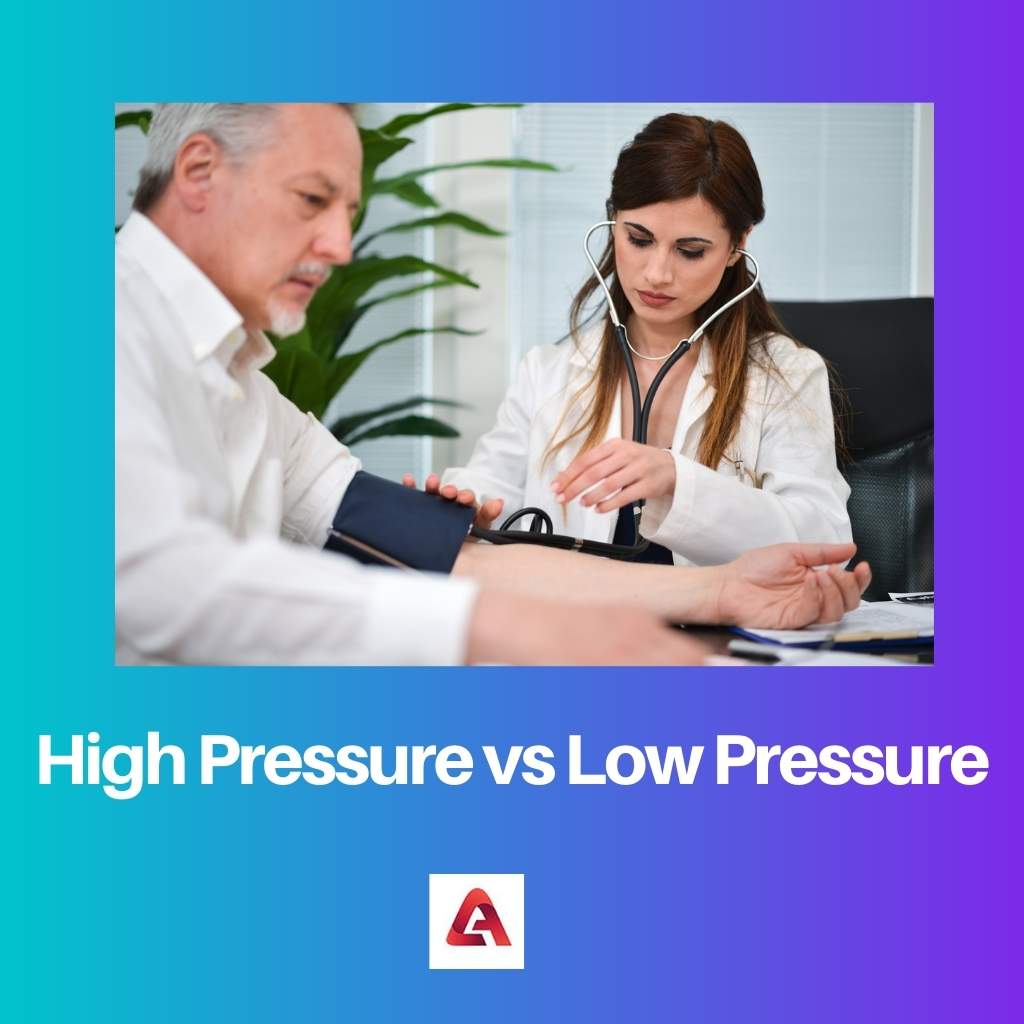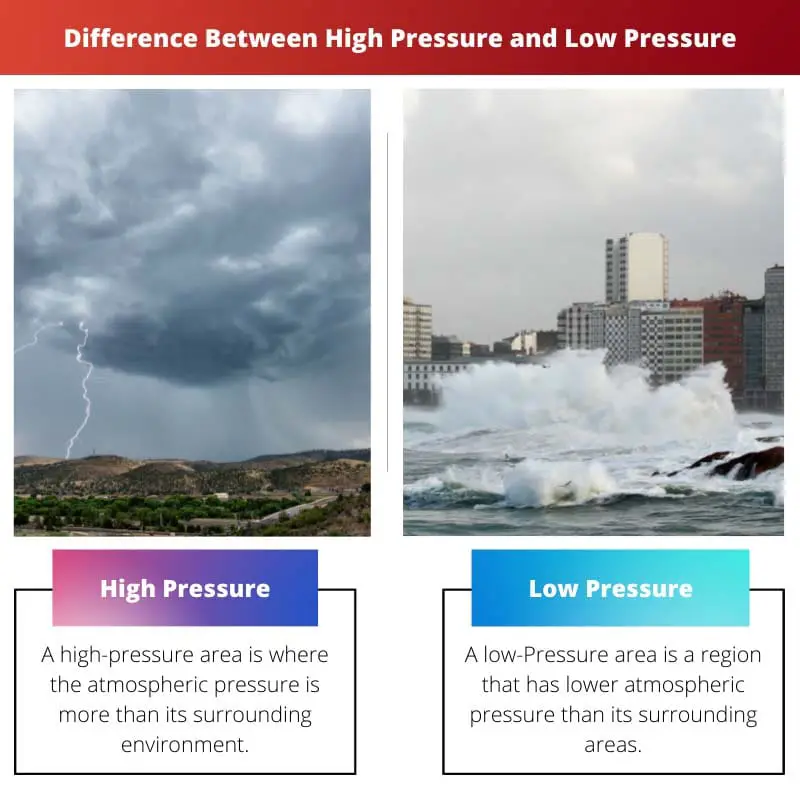Air pressure is known as the weight of the air above us. It can be high or low pressure.
Key Takeaways
- High-pressure systems have air that sinks, leading to clear skies and calm weather, while low-pressure systems have rising air, causing cloud formation and precipitation.
- High-pressure systems circulate clockwise in the Northern Hemisphere and counterclockwise in the Southern Hemisphere; low-pressure systems circulate in the opposite direction.
- Low-pressure systems are associated with stormy weather and stronger winds, whereas high-pressure systems bring about fair and stable weather conditions.
High Pressure vs Low Pressure
High pressure is a situation where the atmospheric pressure is more than the pressure of the surrounding area, so the air sinks and becomes warm. Low pressure is a state where the atmospheric pressure is less than the surrounding area, causing the air to cool as it rises up.

There is a reduction in cloud formation as the air descends and the weather condition settles. The air also warms up.
The air gets cooler, and water vapour condenses, which causes clouds to appear. The weather is unsettled in a depression.
Comparison Table
| Parameters of Comparison | High Pressure | Low Pressure |
|---|---|---|
| Definition | During high pressure, the atmospheric pressure is more than that of its surrounding area. | During low pressure, the atmospheric pressure is less than that of its surrounding area. |
| Condition of Air | The air sinks and becomes warm. | The air rises up and becomes cool. |
| Movement | Clockwise direction. | Anti-clockwise direction. |
| Weather quality | The weather conditions settles up and there are no clouds so the sky clear up. | The weather is unsettled with rapid increase in cloud formation which leads to precipitation of rain. |
| Other name | Anticyclone | Depression |
What Is High Pressure?
A high-pressure area is where the atmospheric pressure is more than its surrounding environment. Such areas where the pressure is above average are known as anticyclones.
The weather in a winter anticyclone
It lasts for a long time and continues during the day due to less heat from the sun. The water droplets that form gradually evaporate away.
The weather in a summer anticyclone
The air descends, and there is heat which causes the water to evaporate in the air. There are very few clouds in the air, and the sky gets cleared up.

What Is Low Pressure?
Usually, it takes place in the mid-latitude temperature zones, and the process is known as cyclogenesis.
- The first one is the early stage.
- Then comes the mature stage.
- The third one is the decay stage.
- And lastly, the dissipation stage.
A low-pressure system has lower pressure at its centre, and the winds blow towards it.
Weather in the winters
During the winter season, the conditions are stormy or wintry. The position of a jet stream is further south than what is in the summer.
Weather in the summers
During the summer season, low pressure can lead to prolonged rainfall. Sometimes, in extreme conditions, floods may also occur, which can cause chaos.

Main Differences Between High and Low Pressure
- The high pressure is known as an anticyclone, and the weather is different in both summer and winter. On the other hand, low pressure is known as depression.
- The weather conditions settle up in high pressure, whereas the conditions are unsettled in low pressure.


This article is incredibly detailed. It’s a great resource for anyone studying meteorology or atmospheric science.
I agree, the level of detail is commendable.
The article does a great job of explaining the fundamental principles of high and low-pressure systems.
I found the article to be quite dry. It could have used a more engaging tone to capture the reader’s interest.
I agree, the content might be too technical for some readers.
The technical nature of the article might be a barrier to entry for readers unfamiliar with meteorology.
The article provides excellent comparisons between high and low-pressure systems, making it easier to understand their effects on weather.
While the information is valuable, I found the writing style to be a bit too formal. A more conversational approach could make it more enjoyable to read.
I can see where you’re coming from. A more casual tone could enhance readability.
This article is very informative. I like how it talks about the weather differences between high and low pressure.
Yes, the article breaks down the differences very well.
I found this article to be very insightful. Understanding the impact of high and low pressure systems is crucial for environmental studies.
Absolutely, it’s important knowledge for various fields.
The comparison table provides a clear overview of the differences between high and low pressure. It’s a helpful reference for students and researchers.
Agreed, it’s a handy summary of key points.
Certainly, it’s an efficient way to grasp the distinctions between high and low pressure.